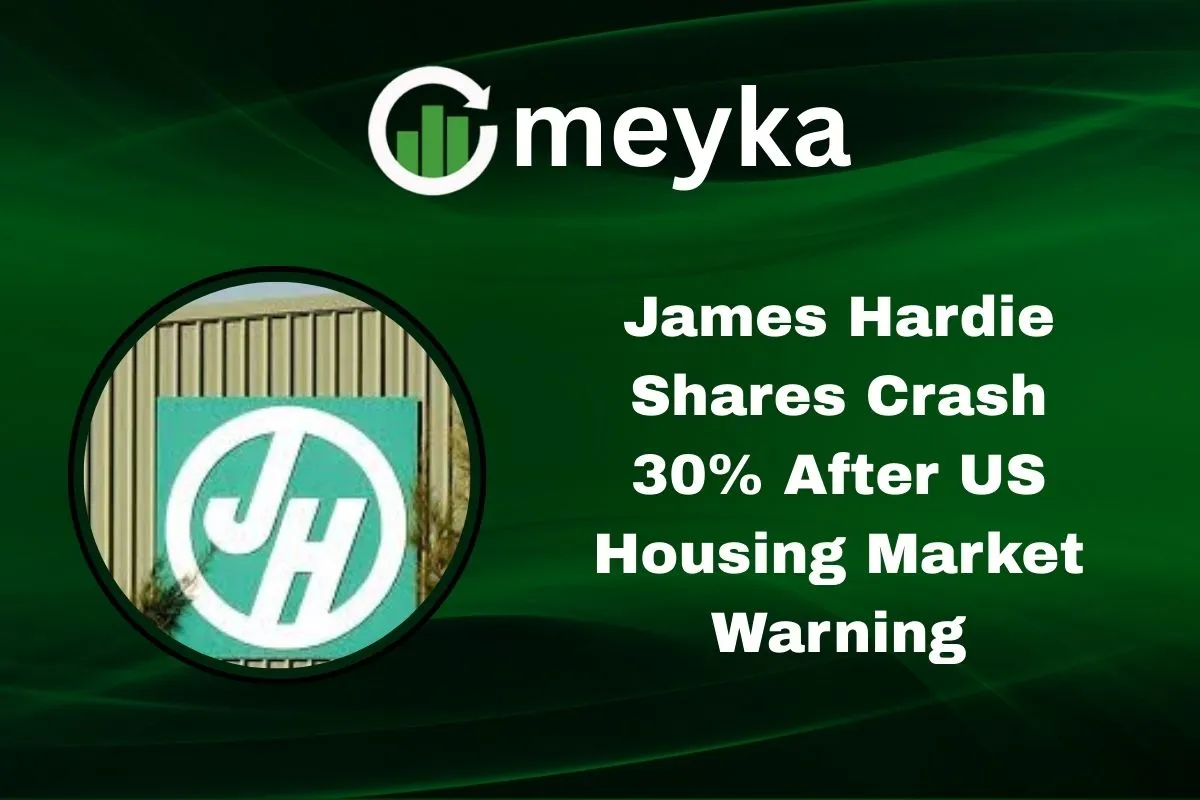James Hardie Shares Crash 30% After US Housing Market Warning
James Hardie, the global building materials giant, faced a shocking market jolt recently. Its shares tumbled a massive 30% after the company warned of a slowdown in the US housing market. We know that James Hardie earns a significant portion of its revenue from the United States, making it highly sensitive to housing trends. Rising mortgage rates, slowing home construction, and tighter lending conditions are putting pressure on builders and suppliers alike. We will explore what triggered the share crash, how investors are reacting, and what the future might hold for James Hardie amid these challenging market conditions. We will break down the numbers, market trends, and company responses to give you a clear picture of the situation.
James Hardie: Company Overview
Founded in 1888, James Hardie Industries has evolved from a small Australian company into a global powerhouse in the building materials industry. Specializing in fiber cement products, the company serves residential, commercial, and industrial markets worldwide. In recent years, James Hardie has prioritized growing its operations in the U.S., which now contributes a large share of the company’s total revenue. This strategic shift has exposed the company to the cyclical nature of the U.S. housing market.
The US Housing Market Warning
The recent downturn in James Hardie’s stock is attributed to a combination of factors within the U.S. housing market. Rising mortgage rates have dampened demand for new homes and renovations, leading to a slowdown in construction activities. Additionally, increased housing inventory has created a buyer’s market, further reducing the urgency for new builds and remodels. James Hardie CEO Aaron Erter acknowledged these challenges, stating that “homeowners are deferring large-ticket remodeling projects” and that “affordability remains the key impediment to improvement in single-family new construction”.
Immediate Market Reaction
The market responded swiftly to James Hardie’s grim outlook. The company’s shares fell 30% to A$31.07, recording the largest single-day drop in its history. This sharp fall erased over $4.4 billion in market capitalization. Investors expressed concerns over the company’s ability to navigate the challenging market conditions, leading to widespread sell-offs.
Underlying Factors Contributing to the Crash
Several factors have contributed to James Hardie’s recent stock decline:
- Weakening U.S. Housing Demand: As previously mentioned, rising mortgage rates and increased housing inventory have led to decreased demand for new homes and renovations.
- Inventory Adjustments: Homebuilders are recalibrating their product inventory in line with the slowing demand, affecting suppliers like James Hardie.
- Acquisition of AZEK: James Hardie’s $8.75 billion acquisition of U.S.-based decking and railing company AZEK has added $2.5 billion in debt to its balance sheet. The deal, financed by issuing 35% more James Hardie shares without shareholder approval, raised concerns over dilution and financial risk.
Implications for Investors and the Market
The significant drop in James Hardie’s stock price has raised concerns among investors. The company updated its earnings forecast for fiscal year 2026 to $1.05-$1.15 billion, which is lower than the market’s expected $1.23 billion. This adjustment reflects the challenges the company faces in the current market environment. Investors will need to assess whether James Hardie’s strategic initiatives, such as the AZEK acquisition, can offset the downturn in the housing market.
Company Outlook and Response
To address the current market challenges, James Hardie has announced a series of strategic initiatives:
- Cost-Cutting Measures: The company is implementing cost-saving strategies to improve profitability amid declining sales.
- Focus on Core Markets: James Hardie plans to concentrate on its core markets, particularly in Asia-Pacific, where demand remains more stable.
- Integration of AZEK: The company aims to integrate AZEK’s operations to realize synergies and expand its product offerings.
These measures are part of James Hardie’s efforts to navigate the current market downturn and position itself for future growth.
Conclusion
James Hardie’s recent challenges underscore the impact of the U.S. housing market on companies within the building materials sector. While the company faces significant hurdles, its strategic initiatives may provide a pathway to recovery. Investors will need to closely monitor the effectiveness of these strategies and the broader market conditions to assess the company’s future prospects.
FAQS:
James Hardie Industries is listed on the Australian Securities Exchange (ASX) under the ticker “JHX.” It is also traded on the US OTC market as an American Depositary Receipt.
Yes, James Hardie is a public company. Investors can trade its shares freely on the stock market. It reports earnings and follows public disclosure rules.
James Hardie can be attractive for long-term investors due to its global presence and building materials demand. However, it faces risks from US housing market slowdowns, so caution is needed.
Disclaimer:
This content is for informational purposes only and is not financial advice. Always conduct your research.






